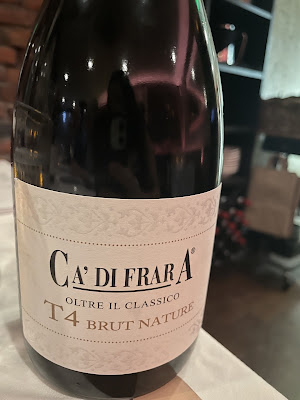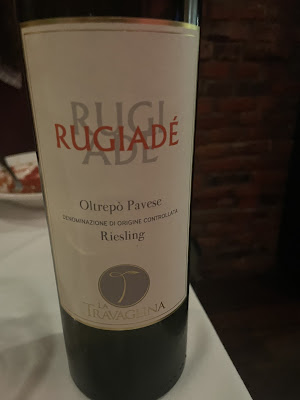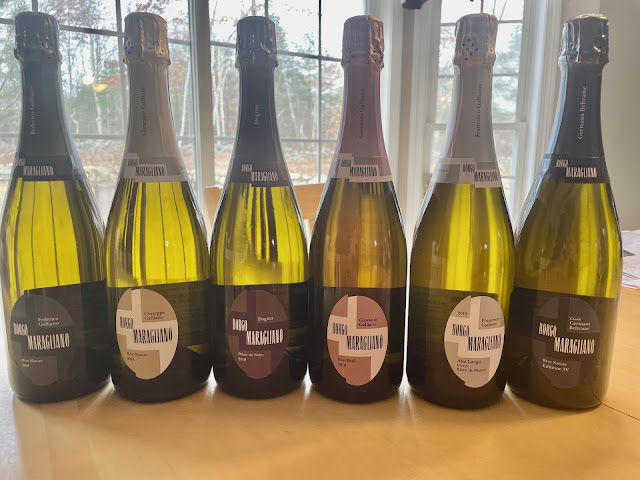Before the end of the year I wanted to highlight the
Lombardy wine region and share a wine dinner I
attended a couple months back in Boston sponsored by the Oltrepo Pavese
Consorzio and wine friend Susannah of Vigneto Communications. You may remember me highlighting some wines
from the Oltrepo in Lombardy awhile back, which I will also rehighlight at the
bottom of this article. It was a
splendid evening in the North End of Boston, the Italian section of Boston, at
Forcella with great food and wine pairings, great conversation and a reminder
of interesting and diverse this region really is.
 |
| Susannah (Vigneto Communicatiaons), myself, Carlo (Consorzio), David (Cooking Chat) and Alison (Artisan Wine Group) |
Whether you have heard of the Oltrepo or not you may be
surprised to learn that this wine area actually accounts for 65% of the wine
production within Lombardy. So much of
the Oltrepo has changed over the years.
In 1884 the Oltrepo had 224 native vines with 59 grapes. Today this area has 10 native vines with a
much more limited amount of grapes. It’s
primary grapes grown and what it is known for are Barbara, Riseling, Croatina
and especially Pinot Nero. The Oltrepo
Pavese is actually 3rd in the world, besides Champagne and Burgundy
France, for the production of their Pinot Noir.
Other grapes also produced within the Oltrepo Pavese include Uva Rara,
Pinot Bianco, Cortese Bianco, Vespolina, Moscato, Pinot Grigio, Malvasia and
Mueller Thurgau.
There are 4 valleys in the Oltrepo from west to east
including Valle Straffora, Valle Coppa, Valle Scuropasso and Valle Versa. Pinot Nero is frequently grown in the Valle
Scuropasso. Barbera you will find mostly
within Valle Straffora and Valle Coppa.
Riesling does well in the calcareous soils of Valle Coppa. Croatina is found in the central valleys
eastward.
We opened the evening with the lovely Ca’ di Frara T4 Brut Nature. The 2022 Bruno Verdi Pinot Grigio was surprising as I never would’ve pinned that wine if tasted blind, although I’m far from an expert. The texture and fruit profile in the wine reminded me of a Riesling.
Although I didn’t take specific notes on these wines during my dinner with the Consorzio I have to say that some of the pairings that we had complemented one another very well. The star pairing was the La Travaglina Rugiade Oltrepo Pavese Riesling DOC paired with a cacio e pepe dish. Also, the Castello di Luzzano Sommossa Bonarda Frizzante with the pasta Bolognese surprisingly paired nicely with a slight frizzante.
Have you enjoyed wines from the Oltrepo?
Here are some of my previous articles on other wines of the Oltrepo Pavese.
You can find Oltrepo Pavese wines at Wine.com.










